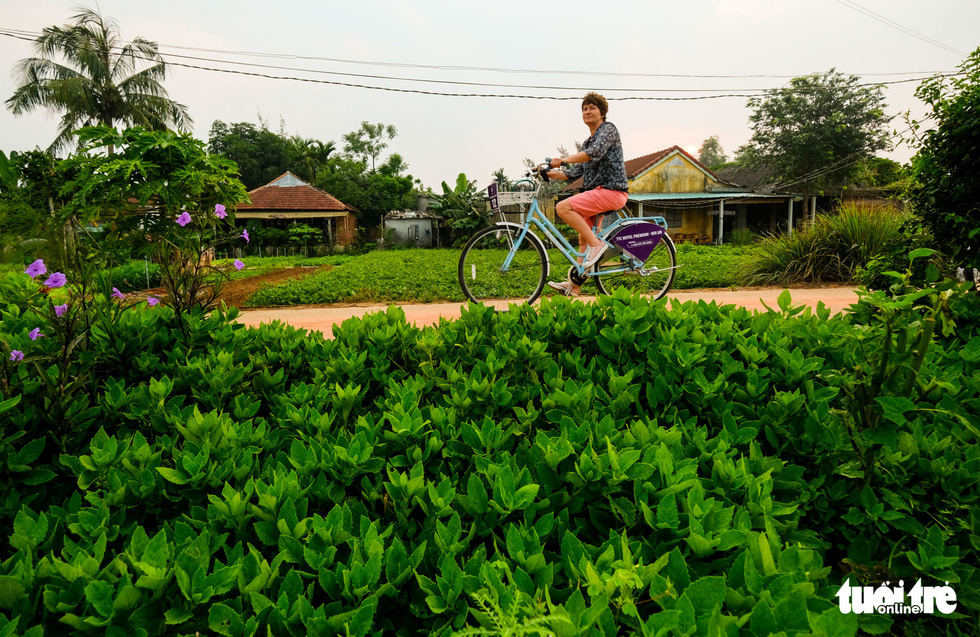Despite connecting to the bustling tourist hub of Hoi An City, Tra Que Vegetable Village of the central Quang Nam Province has surprisingly managed to preserve its rustic and pastoral way of life.
The atmosphere of the village reminds many urban dwellers of their own hometown where they grew up.
In 2015, Tra Que was named one of the ten destinations that tourists must not miss when visiting Vietnam, as per a guide by the French daily Le Figaro.
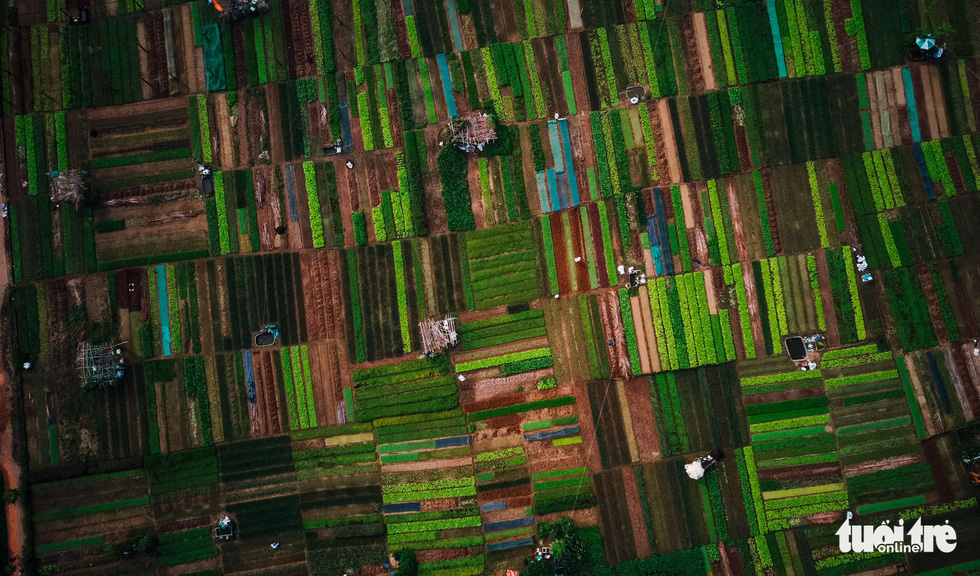 |
| An aerial view of Tra Que Vegetable Village in Quang Nam Province. Photo: Gia Thinh / Tuoi Tre |
The Hoi An area can be divided into three interconnected components: beaches, Hoi An Old Quarter, and the Tra Que Vegetable Village.
The last location, though small, holds a large significance to Hoi An.
Understanding this, authorities of Hoi An City and Quang Nam Province have put the area under a careful planning process to preserve its landscapes.
High rises and monolithic concrete structures can hardly be seen in Tra Que, as the buildings prefer bamboo, rattan, leaves and other locally-sourced materials to compliment the surrounding landscape.
Locals are also fully aware of their stake in preserving Tra Que’s pastoral charms, as can be seen in their work put in to accumulate piles of straw, as well as lines of bamboo trees.
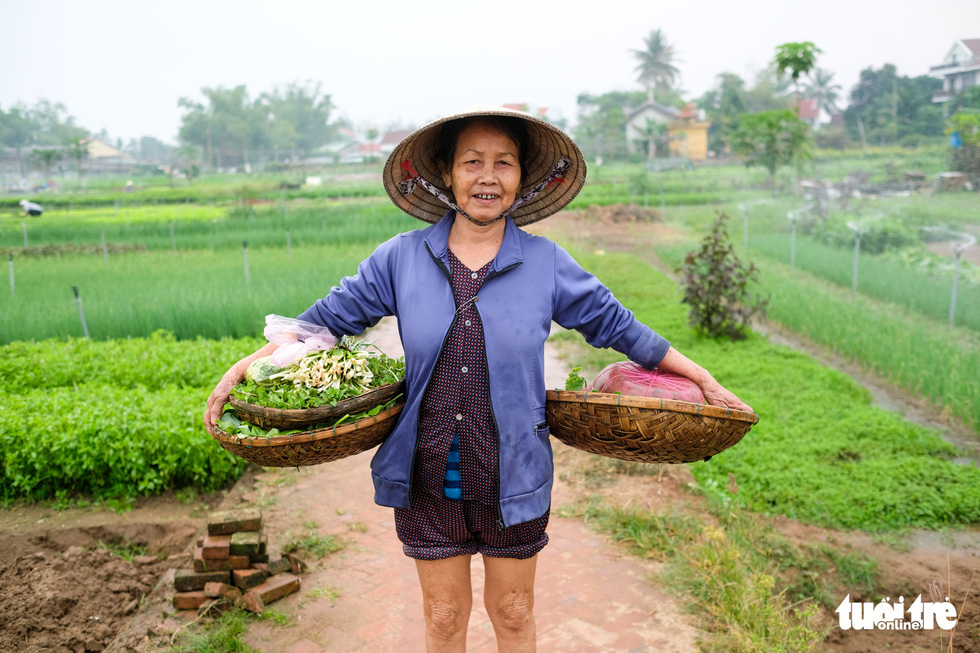 |
| A Tra Que farmer is seen holding her harvests. Photo: Gia Thinh / Tuoi Tre |
Tra Que was discovered by settlers about 400 years ago. It was initially called “Nhu Que”, with “Que” (cinnamon) hinting at the biting flavor of the local herb varieties.
According to historical documents of the village, an emperor of the Nguyen Dynasty arrived at the village in the early 18th century.
After tasting the famous local herbs, he also sensed notes of camellia flower besides the expected spiciness, which led him to fuse “Tra” (camellia) and “Que” (cinnamon) into the new name for the place.
In the current time, the place has chosen to step aside from the race of mass tourism to uphold its own values: eco-friendly, sustainability and hospitality.
Arriving at Tra Que feels like entering a time capsule that came from 25 years ago, yet the place is full of energy, brimming with hopes and dreams.
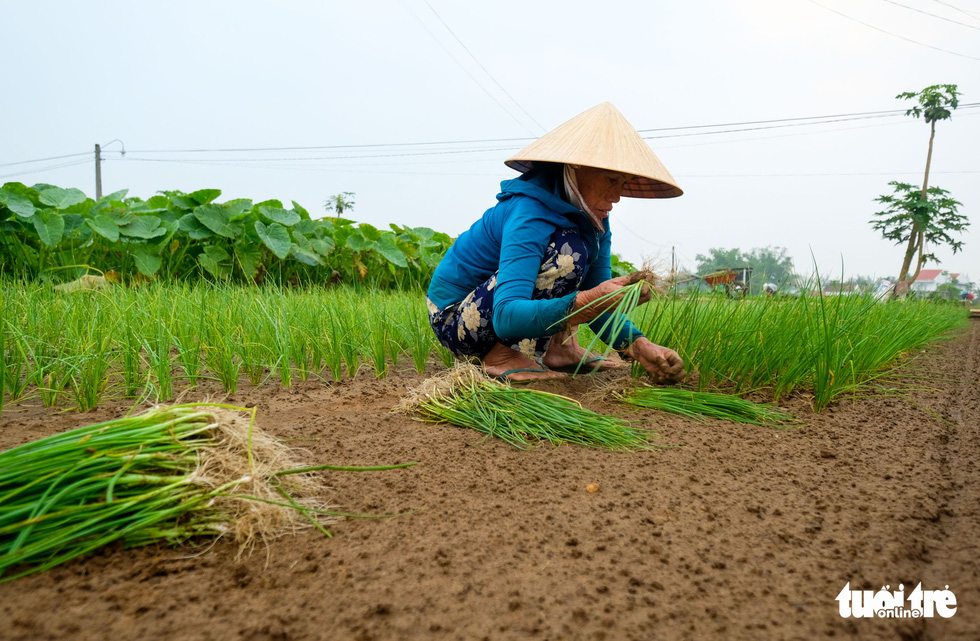 |
| A Tra Que farmer grows bulbs of green onion. Photo: Gia Thinh / Tuoi Tre |
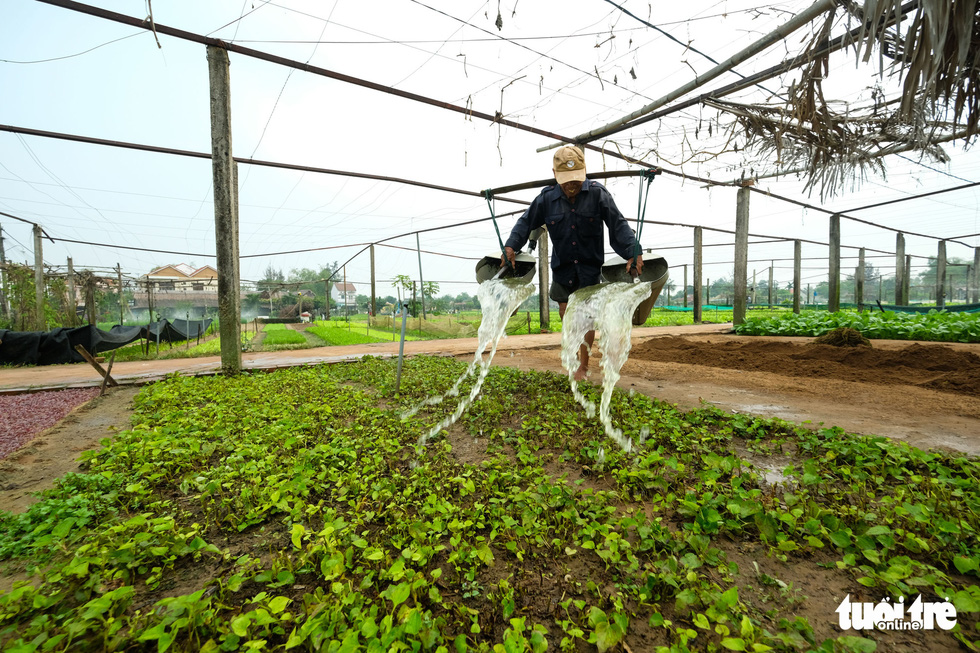 |
| A Tra Que farmer waters his plants manually. Photo: Gia Thinh / Tuoi Tre |
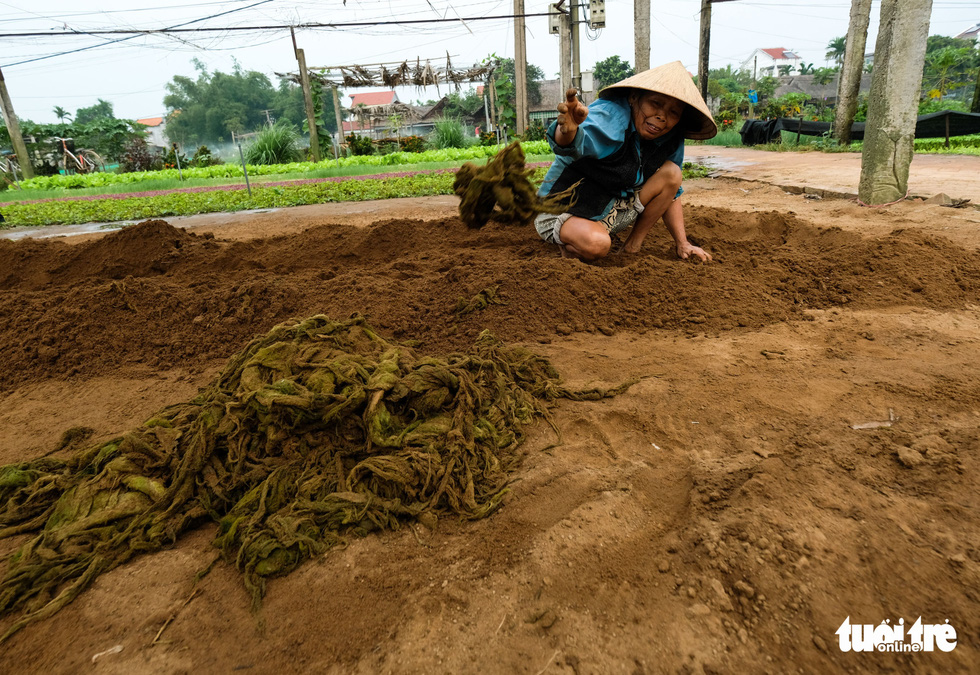 |
| A Tra Que farmer prepares to compost seaweed. Photo: Gia Thinh / Tuoi Tre |
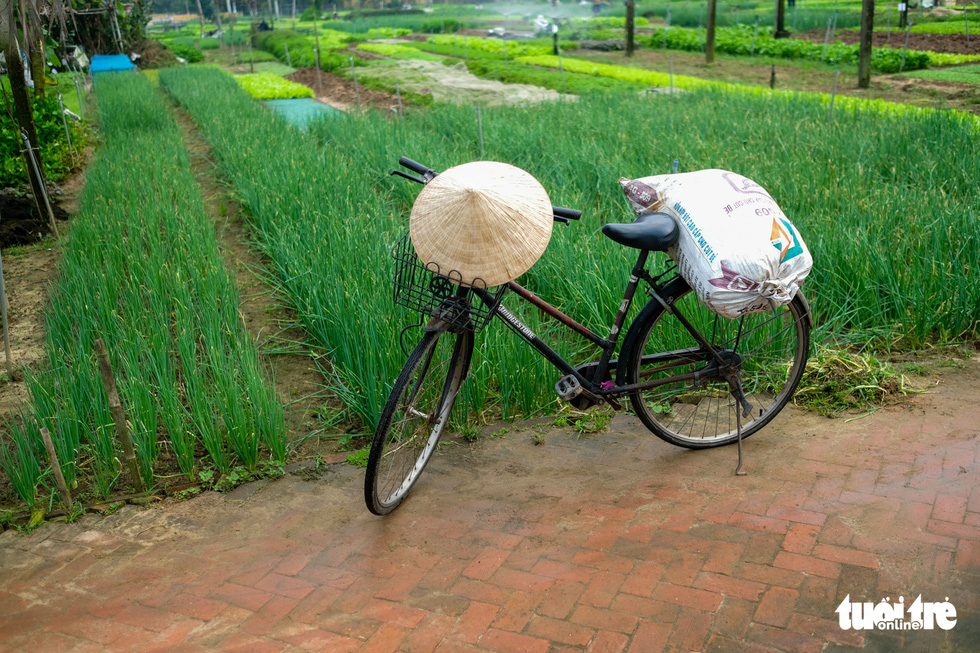 |
| Plots of vegetables are seen at Tra Que Village. Photo: Gia Thinh / Tuoi Tre |
 |
| Plots of vegetables are seen at Tra Que Village. Photo: Gia Thinh / Tuoi Tre |
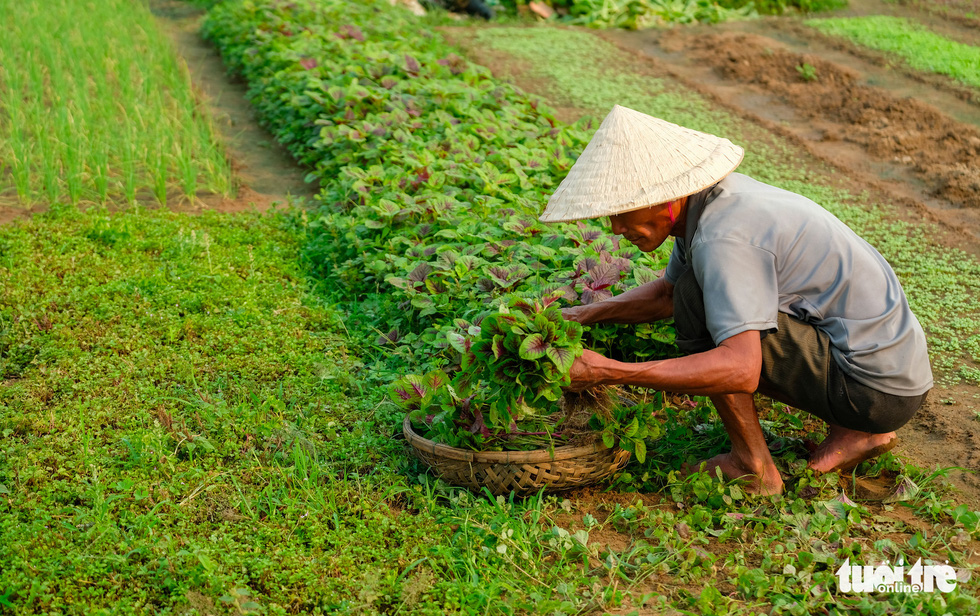 |
| A Tra Que Farmer harvests vegetable. Photo: Gia Thinh / Tuoi Tre |
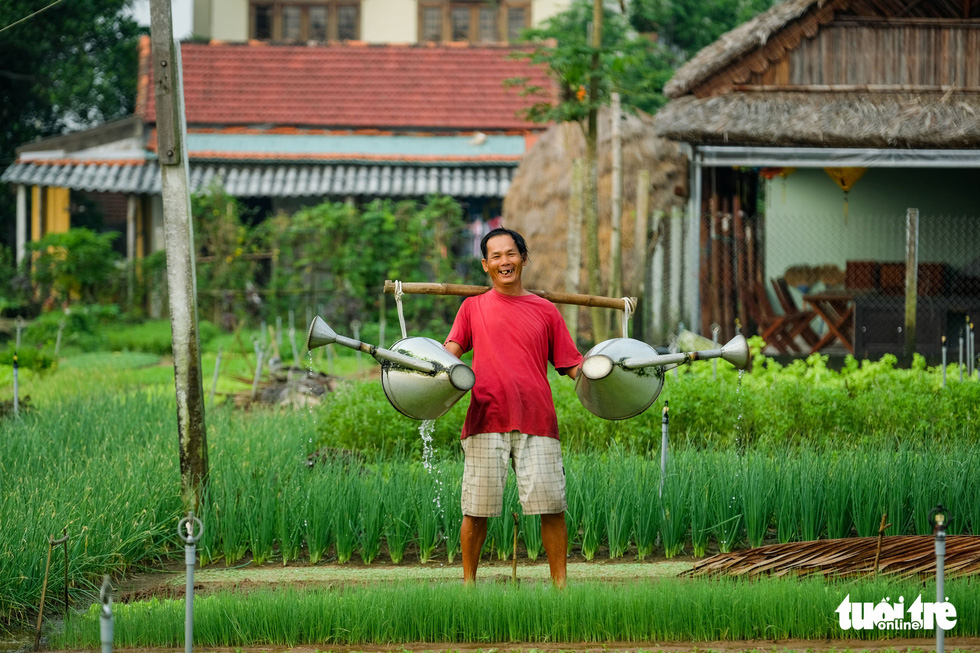 |
| A Tra Que farmer waters his plants with watering cans. Photo: Gia Thinh / Tuoi Tre |
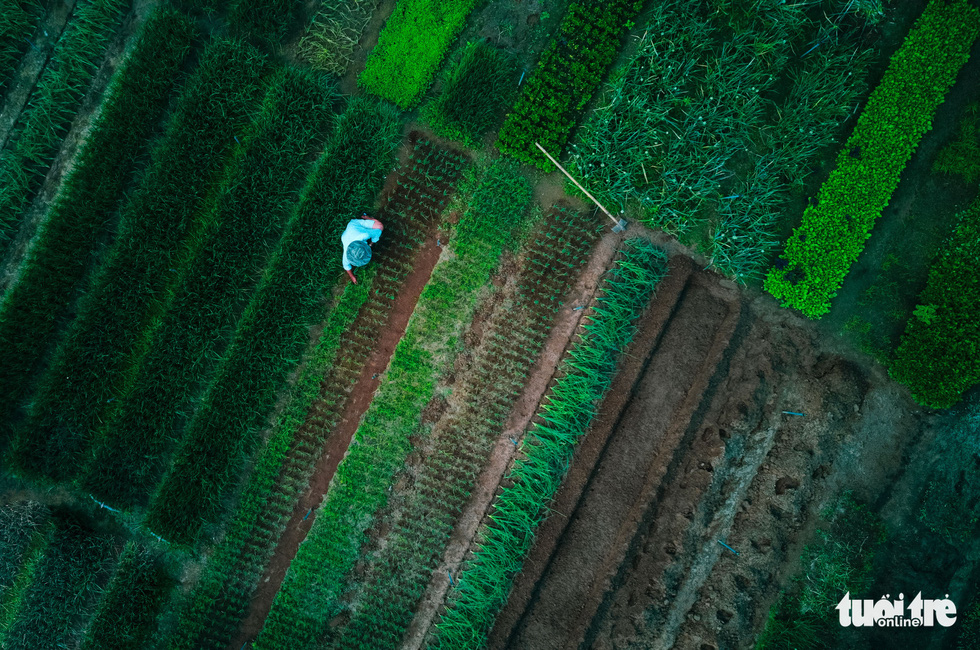 |
| A bird’s-eye view of Tra Que Vegetable Village in Quang Nam Province. Photo: Gia Thinh / Tuoi Tre |
 |
| Plots of vegetables are seen at Tra Que Village. Photo: Gia Thinh / Tuoi Tre |
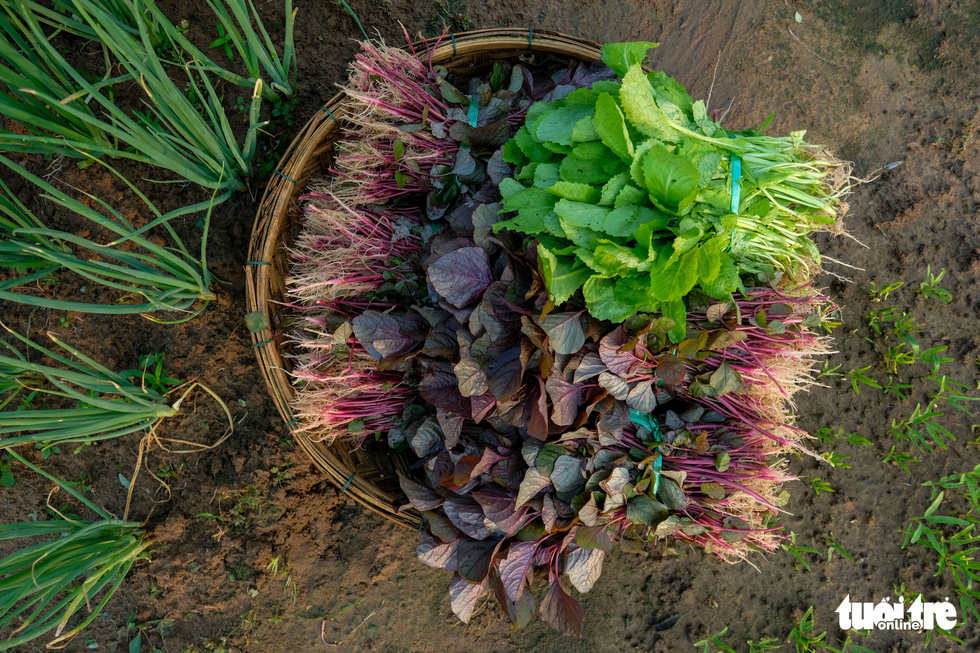 |
| A basket of veggies is seen at Tra Que Vegetable Village in Quang Nam Province. Photo: Gia Thinh / Tuoi Tre |
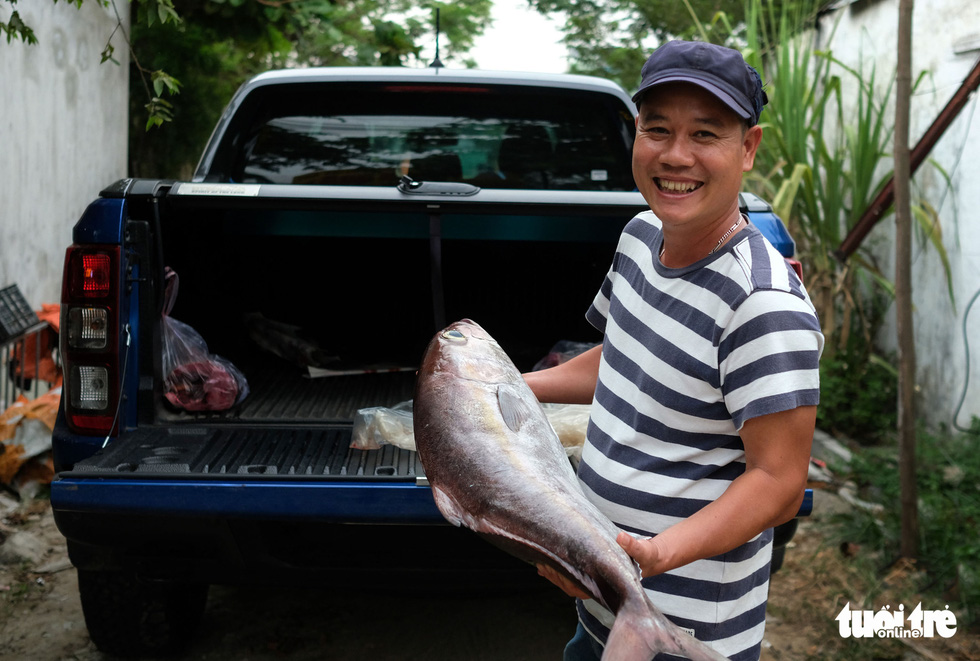 |
| A fish caught from An Bang Beach of Hoi An City is seen in this photo. Photo: Gia Thinh / Tuoi Tre |
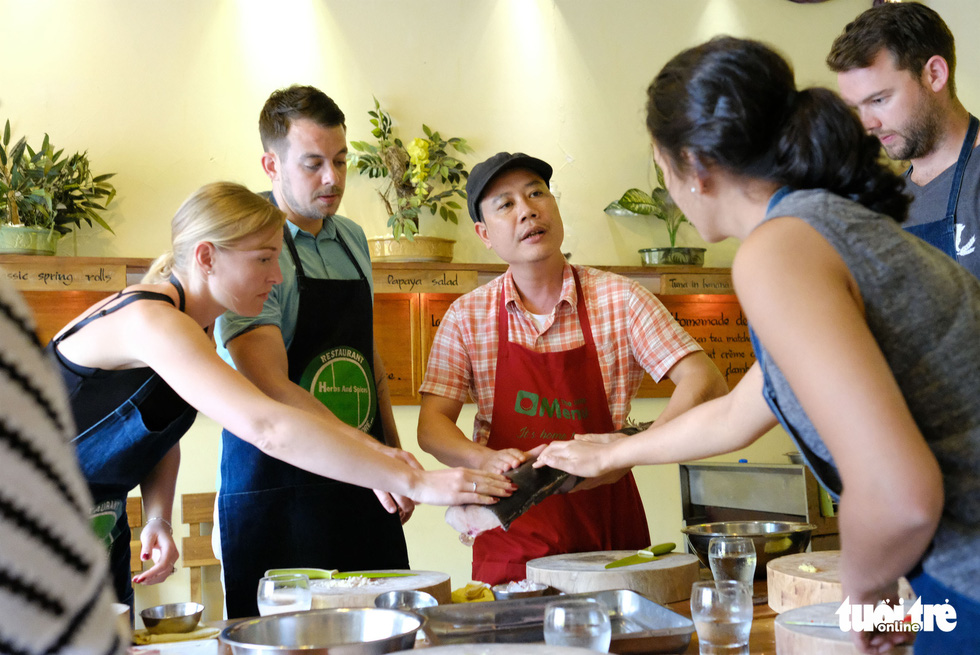 |
| Tourists attend a cooking class at Herbs and Spices Restaurant in Hoi An City. Photo: Gia Thinh / Tuoi Tre |
Like us on Facebook or follow us on Twitter to get the latest news about Vietnam!



